Reviews
John Huston
USA, 1961
Credits
Review by Evan Kindley
Posted on 10 August 2009
Source MGM DVD
Categories Women of the West
The Misfits has a well-known, troubled history. It was written by Arthur Miller for his new wife Marilyn Monroe and filmed in the midst of their breakup; location shooting in the unbearable Nevada heat was beset by Monroe’s drug problems and director John Huston’s gambling addiction; and it was the last film appearance of both Monroe and Clark Gable, both of whom died shortly after its completion. One might well expect the movie to be a total mess. But The Misfits, in fact, has a precision and sureness of technique that belie its on-set problems (recently detailed in the documentary Making The Misfits). It’s surprising how coherent and focused the final product is, given not only its production history but also its subject matter: it’s a concentrated movie about distracted people.
The action of The Misfits begins in medias res. Monroe plays Roslyn Taber, a nightclub dancer who’s come to Reno to obtain a quickie divorce. Every moment Monroe’s onscreen you’re aware of her beauty — and in case you ever forget about it, the other characters tend to comment on it — but also her lack of poise, her squirming and fidgeting. While it’s impossible to tell how much of her performance was affected by factors beyond her control (she was often learning her lines the night before, or even on set), it seems just right for Roslyn, who is leaving one phase of her life behind and tentatively tumbling into another. She ends up getting attached to Gay Langland (Gable’s character), an aging cowboy who ekes out a living hunting wild Mustangs and selling them to a dog food company. Where Monroe seems impressively unaffected, as if she were totally unaware of the camera, Gable is highly self-aware, but this works for Gay, who is playing the part of the cowboy longer than he knows he ought to, and is a little uncertain whether he’s getting away with it.
It’s a given in The Misfits that a cowboy is something you’d want to be — and something you can’t be any more. Miller himself described the film as “an Easterner’s Western,” but while it draws on the resources of the Western for some of its iconography and spirit, it’s more of a drama, closer to Ingmar Bergman than John Ford. The praises of cowboys are sung over and over again, particularly by Roslyn’s brassy sidekick Isabelle Steers (played by Thelma Ritter): “Cowboys are the last real men left in the world, and they’re about as reliable as jackrabbits.” (In an earlier scene, she’d already admitted: “I love every miserable one of you.”) But times are not propitious for these “real men” who, like the misfit horses they chase, are now much fewer and farther between than they used to be.
Huston extracts a lot out of the contrast between Monroe’s pale, luminous skin (aided, in her close-ups, by soft filters) and Gable’s rugged, reddened, hard-used face. He likes to pack the frame with characters, particularly in the lively sequence set at a local rodeo, where Gay and Roslyn encounter Perce Howland, a young bronco rider, and invite him to join their hunt. In another movie, Montgomery Clift’s performance as Perce would steal the show: intense, beetle-browed, with eyes that are at once soulful and a little glazed over, he justifies his presence through sheer charisma, though his character ultimately feels tangential to the plot. (An intimation of some puer/senex rivalry between Perce and Gay over Roslyn’s affection never really comes to anything.)
But the center of the film always remains Roslyn; good as Gable is, this is really Monroe’s monument. She was given a lot to work with: Miller loads the script with personal subtexts, referring to his wife’s past marriage to Joe DiMaggio and her lonely childhood (Gable was Monroe’s childhood screen idol, and there’s an undeniable Elektra tension at work in their relationship: “Didn’t your Papa ever spank ya?” he asks her in one particularly creepy scene). With the exception of a few out-of-place cheesecake moments (a close-up of Monroe’s butt bouncing on a horse, or a shot of her cavorting in a bikini) perhaps inserted for advertising purposes, Monroe is not objectified: rather, Roslyn’s consciousness, however mysterious, is made the controlling one of the film. While many moments are given over to the cowboys’ admiration of Roslyn’s charms, it’s clear that the feeling goes the other way too, and her helpless affection for these “last real men” is also Miller’s. As the film goes on, she may become more and more appalled by the brutality and cynicism of the life she’s wandered into, but she never loses her fascination with it.
It may be possible to make too grand a claim for The Misfits on the level of theme; the movie itself always seems on the verge of making its concerns more explicit, and one of the nice surprises about it is that it never quite does. Clearly there’s some kind of connection between the slow breakdown of romantic relationships and the inevitable decline of the West, and both are treated with the same touch of beat/existentialist ennui: “Maybe all there is is just the next thing,” Roslyn muses early on. “Just the next thing that happens.” But this quasi-philosophical angle isn’t overplayed; instead, we get a thorough exploration of the dynamics between Roslyn, Gay and their assortment of friends. Much of The Misfits has the tone of a slightly sinister party, a basically pleasant occasion capable of veering towards melancholy or anger at any given moment. While often referred to as a portrait of doomed people, Huston doesn’t keep the ominousness from overwhelming the fun: nearly every scene of the film has something genuinely charming and amusing in it; Gable and Monroe have real chemistry, and the supporting turns by Ritter and Eli Wallach are colorful and funny. But there’s only a provisional warmth between the characters, which can be retracted or reversed at any moment, and often is. Roslyn and Gay get together on the understanding that communication between them will be limited (“You don’t like educated women?” “They’re all right. Always wanting to know what you’re thinking, that’s all.” “Maybe they’re trying to get to know you better.” “Did you ever get to know a man better by asking him questions?”) and later in the film, they’re always suddenly realizing that they don’t really know each other: “Now you’re looking at me like I’m a stranger”; “I was just wondering who you think you’ve been talking to since we met.”
As a character study, too, the film has some faults. Clift’s part is a bit trumped-up, Wallach’s and Ritter’s slightly underdeveloped, and Miller’s dialogue, though mostly excellent, is marred by a few purple passages (Gable has to be celebrated for almost making the line “It’s like roping a dream now…” work). At times all Method hell breaks loose (Monroe, Clift and Wallach were all students of Lee Strasberg), with each character getting their chance to rant and stamp. But the movie’s quieter scenes — which make up the bulk of the picture — rarely put a foot wrong. And there are surprising, wonderful directorial touches throughout. One of my favorites has to do with the film’s final scene. As Roslyn and Gay fumble their way toward some kind of resolution — “How do you find your way back in the dark?” “Just head for that big star straight on… It’ll take us right home” — Alex North’s moody, sinuous score heads further and further into dissonance, undermining the audience’s confidence that getting home might be so straightforward as all that. Huston cuts to a shot of the night sky, and the film ends unsettlingly, with the music in mid-phrase, without bringing us back to the tonic. As if…
More Women of the West
-
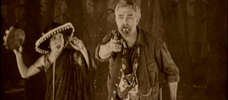
49-17
1917 -

The Gun Woman
1918 -

Destry Rides Again
1939 -

My Little Chickadee
1940 -

Colorado Territory
1949 -

Westward the Women
1951 -
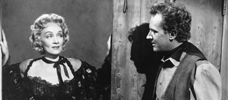
Rancho Notorious
1952 -

The Violent Men
1955 -
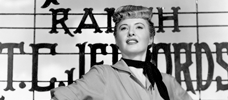
The Furies
1950 -

The Last Sunset
1961 -
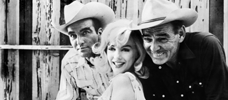
The Misfits
1961 -

True Grit
1969 -
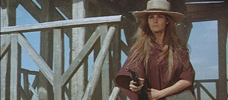
Hannie Caulder
1971 -
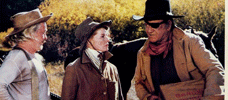
Rooster Cogburn
1975 -

McCabe & Mrs. Miller
1971 -

The Ballad of Little Jo
1993 -

The Quick and the Dead
1995 -
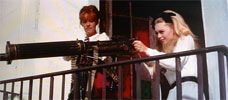
Viva Maria!
1965 -

Two Mules for Sister Sara
1970
We don’t do comments anymore, but you may contact us here or find us on Twitter or Facebook.



